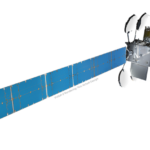
#GCASPODCAST Ep. 60: OneWeb, SpaceX and Telesat Talk Future of LEO Connectivity for Airlines
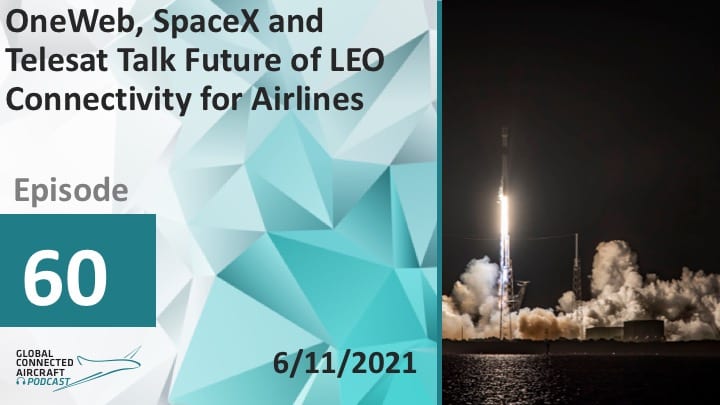
On this episode of the Connected Aircraft Podcast, we’re featuring a replay of the Low Earth Orbit (LEO) satellite connectivity panel from our Connected Aviation Intelligence program.
The panel we’re featuring is the “The LEO Revolution is Underway in Satellite: What Does it Mean for Airlines?” with guest speakers, Manik Vinnakota, Director, Commercial and Product Development, Telesat, Ben Griffin, Vice President, Mobility, OneWeb Satellites, and Jonathan Hofeller, Vice President of Starlink Commercial Sales, SpaceX.
We have seen major announcements from SpaceX, Telesat, and OneWeb regarding their LEO constellations. The era of LEO is here and what does this mean for the airlines? Will they be looking at the LEO option much more seriously compared to traditional GEO satellites in the future? With a LEO revolution taking place in satellite, the panel examines how much of an impact these players could have in the IFC arena.
Have suggestions or topics we should focus on in the next episode? Email the host, Woodrow Bellamy at [email protected], or drop him a line on Twitter @WbellamyIIIAC.
Listen to this episode below, or check it out on iTunes or Google Play If you like the show, subscribe on your favorite podcast app to get new episodes as soon as they’re released.

#GCASPODCAST Ep. 46: Deutsche Telekom VP of IFC and Services Talks Connecting Mobile Devices In-flight

On this episode of the Connected Aircraft Podcast, David Fox, vice president of in-flight and connectivity services for Deutsche Telekom joins to discuss how his company has been expanding its presence in supporting cabin internet and mobile network access in-flight across Europe and other regions of the global commercial airline market.
With David, we discussed how Deutsche Telekom is expanding its presence in providing in-flight connectivity and services for airlines, and David provides some perspective on how they’re trying to make the process for airline passenger journeys transitioning from one airport, to the aircraft and then on to the destination airport and the way that passengers stay connected in each of those phases.
We also ask David how Deutsche and others are trying to make that process more seamless, as well as some other in-flight connectivity related topics they’re working on.
Have suggestions or topics we should focus on in the next episode? Email the host, Woodrow Bellamy at [email protected], or drop him a line on Twitter @WbellamyIIIAC.
Listen to this episode below, or check it out on iTunes or Google Play If you like the show, subscribe on your favorite podcast app to get new episodes as soon as they’re released.

#GCAPODCAST Ep. 21: Connected Aircraft Cybersecurity 101 With the Satcom Guru
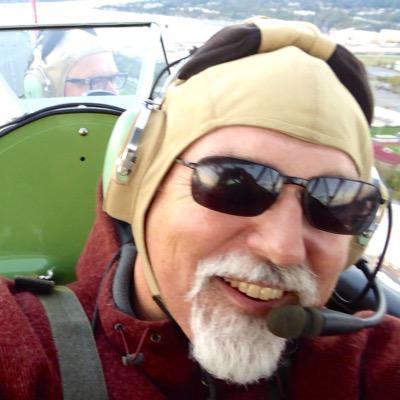
On this episode of the Global Connected Aircraft podcast, we spoke with Peter Lemme, an aviation industry consultant, blogger and former Boeing engineer who wears many hats including supporting the research and development of standards by the Seamless Air Alliance, which just published Release 1.0.
Lemme provides a connected aircraft “Cybersecurity 101” style overview of what types of cyber risks and potential threats operators face as the deployment of in-flight connectivity and its use cases continue to advance and scale up across the globe.
Among the topics discussed with Lemme include the following:
- How in-flight Wi-Fi is an open public hotspot with attack points that can compromise passenger personal information.
- Best practices associated with protecting connected aircraft systems from potential threats
- Aircraft Interface Device functionality and how it helps protect aircraft systems from connected electronic flight bags
- The advancement of the Aircraft Communications Addressing and Reporting System (ACARS) network and the ACARS over IP concept
The opening panel discussion at the 2020 Global Connected Aircraft Summit will feature cybersecurity leadership from three prominent North American airlines – Alaska, American and United – discussing the challenges and advancements they’re experiencing and making in protecting their connected aircraft systems from cyber threats.
Listen to this episode below, or check it out on iTunes. If you like the show, subscribe on your favorite podcast app to get new episodes as soon as they’re released.
Don’t forget to check out www.gcasummit.com for more information on the Global Connected Aircraft Summit, coming up June 2-3 in Denver, Colorado
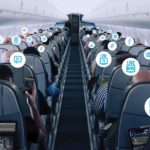
Viasat, China Satcom Bring IFC to Airlines Over China
Viasat and China Satellite Communications (China Satcom) entered into a strategic partnership to jointly provide In-Flight Connectivity (IFC) services within China for domestic and international airlines. Viasat and China Satcom will help enable Viasat’s global airline customers to have roaming connectivity when flying over China; provide IFC service to domestic flights within China; and enable Chinese airlines to roam onto Viasat’s global network. China Satcom is a licensed telecommunications service provider in China and also owns and operates a Ka-band spotbeam satellite system in China, which is the only Ka-band system currently available for IFC service in the country. Yet today, only about four percent of flights within China are connected. “Our agreement with China Satcom is a significant step towards realizing a seamless global community of high performance IFC. China Satcom is now the only satellite operator and licensed service provider in China with the bandwidth resources to deliver the in-flight experience our airline customers have come to expect and depend on,” said Don Buchman, vice president and general manager, Commercial Aviation, Viasat. “Our partnership is a natural way to extend state-of-the-art services specific to China Satcom’s fleet and the China domestic market, and create a global roaming alliance for our existing and new domestic and international customers and the rapidly growing Chinese global commercial airline fleet. We are honored to work with China Satcom in China to make IFC-at-scale a reality.”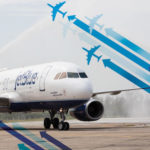
JetBlue’s Stoyanova Looks to the IFC Horizon
 Mariya Stoyanova, JetBlue’s head of product development, is the very definition of an In Flight Connectivity (IFC) influencer. She is one of the leaders behind JetBlue’s remarkable progress in the IFC arena. She, along with her team, have big ambitions to make JetBlue the standard when it comes to IFC. But, what does she think of the satellite industry and what does she want from the tech industry?
Mariya Stoyanova, JetBlue’s head of product development, is the very definition of an In Flight Connectivity (IFC) influencer. She is one of the leaders behind JetBlue’s remarkable progress in the IFC arena. She, along with her team, have big ambitions to make JetBlue the standard when it comes to IFC. But, what does she think of the satellite industry and what does she want from the tech industry?
It is a sunny autumnal day in Boston, a city I haven’t visited for almost two decades, but the venue for The Airline Passenger Experience Association (APEX) Expo — one of the key events for the airline industry when it comes to IFC. One of the highlights of the trip was sitting down with Stoyanova to talk about satellite tech, customer partnerships, passenger experience, and all things in between. Stoyanova is both candid and forceful at the same time while making a point. As a ‘blue chip’ customer for the satellite industry, when Stoyanova (and JetBlue) talks, the industry should listen.
JetBlue’s first connected aircraft was introduced around five years ago. It was part of its value proposition when the airline came into operation. It reached 100 percent fleet connectivity in 2017, which was a significant milestone. The company, a leisure based airline, has put IFC front and center in its strategy. Stoyanova admitted that she considers JetBlue, even in the hyper competitive North American market, “the market leader” when it comes to IFC. “We are more customer friendly than other carriers, as I believe it is more part of our JetBlue customer value proposition rather than an ancillary revenue strategy. This is where our strategy differs from other carriers. Our free product is better than most paid products that are being offered currently, especially in the U.S. market. I think that is the future. We do believe in seamless, uninterrupted living and removing those anxiety moments from the customer experience by providing them with a service they can rely on.”
One of the themes of APEX last year was larger airlines placing more of an emphasis on IFC. Stoyanova says the industry is “shifting” — especially the onboard experience. The experience used to be a commodity, and she believes that airlines became complacent in the way the way they sold and marketed IFC to customers. “Other airlines are investing in the product and moving towards a better experience overall,” she adds. “Where I still think I have the edge is we have a pretty consistent aircraft type. It is easier to sustain it. We operate the A320 family and now we will have the A220 family. We have a relatively consistent product offering. We have seatbacks at every seat. So, I think the consistency of the product and consistency of the fleet gives me a little bit of an edge from being simple and being able to manage the product and the offering better.”
Satellite Technology and What Stoyanova Wants?
JetBlue is one of the Viasat’s most high profile airline customers. Stoyanova came into the role when going down the Ka-band route had already been decided. She admits it was “definitely a risky” journey to go down, considering that at that time, not many (if any) airlines had decided to pursue Ka-band. “The first test flight we had with Viasat, we all looked at each other and said: this better work,” she says. “The first test flight was in 2013. I was part of the sourcing team at that point. I came at it from a different lens and different angle. But, it was very exciting.”
Stoyanova spoke to the value in Viasat’s satellite technology. “The value with Viasat is outside of their product,” she says. “They have the service on the ground. They have learnings on the ground that I can transfer into the air, which is very helpful. In terms of satellite technology, it is only getting better. They listen to our feedback and offer us solutions to optimize the product so we can provide a better experience.”
She says the technology industry (implying the satellite industry) is moving too slowly. She says that the lead times are “insane,” and unfortunately, the real world is moving much faster. “I understand how the aviation world works. Customers are getting more and more demanding so creating systems that provide flexibility and are future proofed will help me a lot. Things are changing so fast,” she says.
But how much satellite capacity is JetBlue actually using? While Stoyanova does not give an exact figure, she admits how the bandwidth is changing significantly. She points to the fact that years ago, there were no videos on Facebook’s newsfeed, and that there were no Instagram stories. These platforms have now become “essential” to customers but for JetBlue, they will need greater bandwidth to cope.
Using Satellite Providers Other Than Viasat
While JetBlue is undoubtedly happy with its work with Viasat, many other satellite operators are targeting the IFC market. As airlines examine their options moving forward, JetBlue could work with other providers. With many new satellites being launched in different orbits, is JetBlue actively considering other satellite companies for its IFC needs? “Whenever we have a retrofit program underway or a new aircraft type coming in, we always explore our options,” she says. “We have just ordered more than 60 A220s, so we are in the process of selecting IFC and connectivity providers. We’re always on the lookout for what’s new in the connectivity realm, but Viasat is the standard right now.”
Cracking the Code
In a recent interview with Via Satellite, Andrew Middleton of easyJet said no airline had cracked the IFC code or found the magic formula to be successful. So despite JetBlue’s success, does Stoyanova believe that JetBlue or another airline has cracked the code? “The way most airlines look at it is the revenue share model and the paid product. The partnerships are a part of it as well. People think we have a secret sauce. I don’t,” she says. “I just took a different path. We need to optimize for customer experience rather than talk about Service Level Agreements (SLAs) and Key Performance Indictators (KPIs). The industry is shifting, especially the onboard experience. It’s no longer about a plane taking you from point A to point B. Customers are not looking for a commodity, they are looking for an experience.”
Partnerships
Most airlines are getting connected. Some like JetBlue may have done it quicker than others, but most are connected or in the midst of getting connected. It means that to stand out from the crowd, airlines may have to partner with others to improve the overall experience. JetBlue has worked with Amazon in an innovative partnership, that allows JetBlue customers access to their Amazon services. They can stream, listen to music and shop. JetBlue promotes all those things when you are onboard. Stoyanova says these are not hooks designed for customers to pay the airline more. They are hooks for customers to have a better experience.
In terms of other partnerships, Stoyanova admits she sees a lot of value in them. “With Amazon, they saw the value in us owning the whole customer experience and them integrating into our system. For Amazon, those are people that are in a aircraft at 35,000 feet. You want get their attention for the duration of the flight,” she says. “So, this is totally incremental to everything else that you do. You have the ability to organically convert customers as you have your product in the air. The fact we offer Fly-Fi for free means this is completely organic and it is self-selected. It is not a forced offering. This is why it takes time to educate companies to build partnerships, but once they understand it, they see the results from the previous partnerships we have done, they jump on board.”
Yet, has the partnership with Amazon created any bandwidth bottlenecks? “When we set-up the partnership with Amazon, the three of us (JetBlue, Viasat and Amazon) did work hard to make sure the streaming product was optimized for our Fly-Fi product,” Stoyanova says.
The Next Chapter
Stoyanova is unphased about the epiphanies that some airlines seem to have had recently regarding IFC. She admits that in lieu of monitoring the competition, she gets her inspiration from outside the airline industry. “I look at the hospitality industry,” she says. “I would look at the Disney experience, for example. You would have some of the hotel chains as they are good at delivering curated services. Hospitality is really important. In Flight Entertainment (IFE) is just part of what we do. We own the whole onboard experience so food and beverage, the interiors, and the ground experience. For us, hospitality is a big part of what we do. If the inflight and airports crewmembers are not invested, it doesn’t work. Everybody has to be invested in it for it to work.”
She says her job is “getting more interesting,” but doesn’t believe it is getting harder. “I don’t like to get comfortable, [because] then you get complacent. I think this happened to a lot of the carriers back in the day. Airlines like JetBlue started to make them feel uncomfortable because they put something in the market that is providing more customer value. It made them move faster and in the right direction. I am happy for that. Challenging is not necessarily badshe says.
In terms of what is on deck for the airline over the next year, Stoyanova says the airline has a “a lot of big things coming up.” It has started retrofitting all of its A320s, so it will have a new IFE platform, interiors, etc. There will also be new portals. “I am looking forward to seeing how that will perform. We also have the A220s coming up,” Stoyanova says.
Check out the full version of this article as first published in Via Satellite.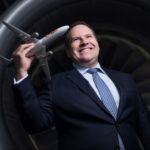
#GCAPODCAST Ep. 7: GOL Airlines Chief Experience Officer Paulo Miranda
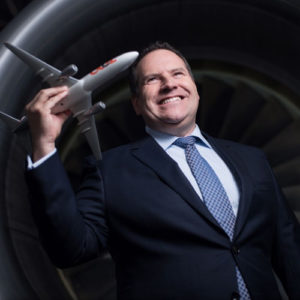
Paulo Miranda, chief experience officer of GOL Airlines.
The Global Connected Aircraft Podcast is back for an exclusive interview with Paulo Miranda, the chief experience officer (CXO) of GOL Airlines. He discussed the Brazilian airline’s latest cabin connectivity services and capabilities including streaming and live television.
Check out the episode below, or download it from Apple Podcasts.
